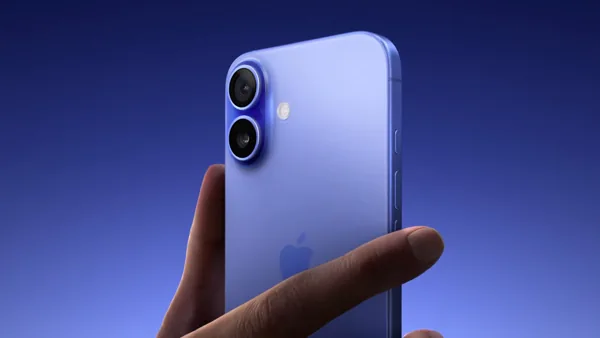
Did you saw that? So these are the main bullet points for Apple's 2024 Keynote:
- iPhone 16 and iPhone 16 Pro: The iPhone 16 lineup features improved cameras, including a 48MP Fusion camera and new ultra-wide capabilities, offering enhanced macro photography and spatial photo/video capture for Apple Vision Pro. These phones also support advanced Photographic Styles for more personalized editing and spatial audio for immersive listening experiences;
- Apple Watch Series 10: This new model is thinner, has a larger display, and is up to 40% brighter when viewed from an angle. It also introduces sleep apnea detection, making it a significant tool for health monitoring;
- AirPods 4: The latest AirPods include hearing health features, such as hearing tests and noise protection. There’s also a new AirPods Max with USB-C;
- Apple Intelligence: Integrated across devices, this AI-powered system enhances tasks like photo cleanup and voice recognition, helping users find specific moments in videos and even removing distracting elements from photos.
From these main selling points, the only real innovation Apple delivered - and yet, questionable and debatable - were the new health features on the Apple Watch s10, and the AirPods Pro 2:
- Sleep Apnea Detection: A new health feature uses the accelerometer to detect breathing disturbances and notify users if they show signs of sleep apnea;
- Hearing Aid Mode: This new feature can amplify conversations and other sounds, making it easier for those with hearing difficulties.
Thank you Apple for these, but, as a recurrent customer, I'm unhappy with the overall outcome of this Monday's keynote. VisionPro's release was already disappointing in comparison to some more affordable alternatives in the market, like Meta Quest 3, but now, with Monday's keynote, Apple was at its worst:
- Overemphasis on Incremental Upgrades: Many feel that Apple’s focus on slightly thinner designs and incremental brightness increases (like the 40% brighter screen on the Apple Watch) comes off as trivial rather than groundbreaking. Such small updates are not seen as major innovations worthy of the hype typically associated with Apple events;
- AirPods 4 Hearing Aid Mode: While adding hearing aid functionality to AirPods is a great concept, some found it a bit odd that such a serious health feature is built into a luxury audio product. There’s a debate on whether users will trust AirPods for this purpose when dedicated medical devices exist for this need;
- Environmental Claims: Apple emphasized the carbon-neutral status of the Apple Watch Series 10, using 95% recycled titanium and 100% renewable energy. While commendable, some critics argue that Apple’s continued focus on yearly hardware releases contradicts its environmental messaging. The production and marketing of new gadgets each year can still lead to unnecessary electronic waste;
- Camera Button on iPhone 16: The new physical camera button was seen by some as a minor addition that doesn’t warrant much excitement, especially given the phone’s price increase. Many users already find the touch interface intuitive enough for photography;
- USB-C Charging on AirPods Max: Apple introduced USB-C ports for AirPods Max, which some users see as overdue but underwhelming. Given the slow shift to USB-C across Apple’s products, this feature didn’t feel revolutionary. Many expected more significant upgrades like improved sound quality or noise cancellation.
I told my partner hours before we sat watching the Keynote that it was going to be a flop.
- Apple Intelligence and AI Features: Apple discussed its new Apple Intelligence system, which is supposed to enhance features like photo cleanup and natural language searches. However, the specific capabilities and how users would interact with these features were not clearly explained. It left many wondering how these differ from existing machine learning features already in use;
- Spatial Photography for Vision Pro: The keynote introduced spatial photos and videos with the iPhone 16, meant for viewing on the Vision Pro. While this sounded exciting, there was little explanation about how many users would adopt or engage with this feature, given that the Vision Pro isn’t yet widely available. It felt disconnected from the general user base, leading to confusion on its immediate value;
- Action Button on iPhone 16: Apple emphasized the new customizable Action Button as a major feature, but many found it underwhelming. The button allows users to quickly access functions like the camera or flashlight, but it felt like a small, incremental upgrade rather than a groundbreaking change, especially since many similar shortcuts are already available via software;
- Vague Performance Claims Across Devices: Apple frequently made broad statements about performance improvements without providing specific metrics. For instance:
- The iPhone 16 was described as having a more powerful processor (A18), but Apple didn’t give concrete benchmarks or comparisons to previous generations, leaving users uncertain about the actual performance gains;
- The camera improvements on the iPhone 16 were also underspecified. While they emphasized features like spatial video capture and the new telephoto options, no real-world data (e.g., speed of processing, photo quality comparisons) were presented;
- Similarly, the battery life for both the iPhone and Apple Watch was not clearly detailed. They highlighted faster charging but skipped over how long the devices would last on a full charge with typical usage.
Did you watch the keynote? What are your thoughts?
If you haven't had the opportunity of watching it, here it goes: